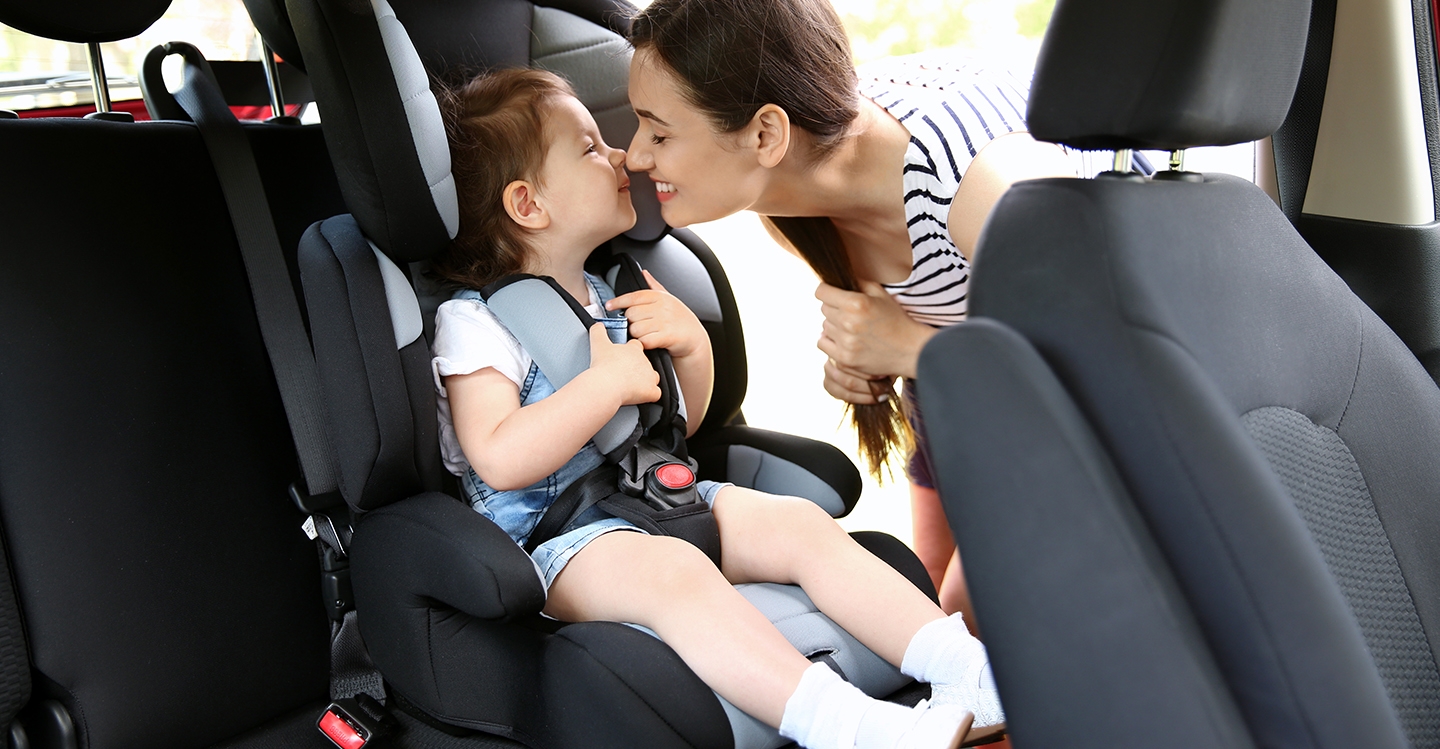Don’t turn around
Accidents can happen in a split second. As insistent as your toddler might be, if a toy falls to the ground, or even if they have a sibling and it sounds like World War III back there, don’t take your eyes off the road – and certainly don’t reach back.
When speaking in a firm and calming tone doesn’t help, pull over and deal with the issue. Arriving a few minutes late is better than the alternative.
Avoid eating and drinking
Doing these while driving alone is distraction enough – add a toddler to the mix and you’re in trouble. With a little less time on your hands getting in and out of the car, the temptation is to save time by eating and drinking on the go.
At worst, limit yourself to a drink without a lid (squeeze bottle, coffee etc.), ideally with the use of a cup holder and only when stationary. At best, try to eat and drink before driving.
Don’t leave anything on the passenger seat
Phone, makeup, pizza – anything on the passenger seat has a tendency to slide. And what’s your first instinct? To look over, reach out and stop it.
Make use of the passenger footwell for larger items, or the console compartments for smaller ones, and avoid this reflexive action entirely.
Ditch the phone
Only very recent car models are likely to have capabilities that allow you to answer a call without removing your hands from the wheel. For many people, the temptation remains to either answer a call via handset, or to text and drive. Not only is this a huge risk to you and your toddler, but the fines are often several hundred dollars and several demerit points – in excess even of speeding penalties.
Either make use of a hands-free attachment, pull over, or ditch the phone entirely – emergencies rarely happen and the risk is just not worth it.
Use a properly-fitted car restraint
It is vital to use a properly-fitted car restraint, built to Australia’s stringent specifications. Not only are these tethered to the vehicle and designed for maximum impact safety, but they also include guidelines on whether or not they are maximally suited to your toddler’s height.Car toys
The best car toys for toddlers are ones that can’t be dropped. Plastic chains provide a safe tether between toys and the car restraint so that there is no dropping and no distraction from a suddenly vocal toddler.Restrain or separate pets
For their own safety – as well as yours and your toddlers – invest in a pet restraint or, if you have the capability to do so (such as in a station wagon or 4WD), separate your pet and toddler by driving with your pet in the rear compartment.Make use of childproof locks
The vast majority of cars have childproof latches in the rear doors to prevent being opened from the inside. While toddlers are unlikely to be able to get free to play with the door, remove the risk from the equation.Set a good example
The minds of little children are like sponges. Make no mistake: your toddler will be paying close attention to what you’re doing.
Be on your best behaviour while you drive and ensure your toddler develops an early appreciation for road safety. As they develop their vocabulary, explain what you are doing as you are driving. For example, ‘See how I’m stopped and looking both ways?’ or ‘See how the number on the speedometer matches the number on the signs?’
Not only will this set a good example for your little one, but it might also encourage you to be mindful of the actions you take on the road.



